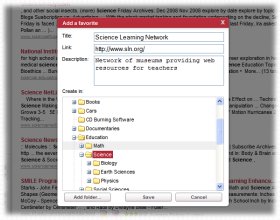|
Education
Web
Viewing 1-2 of 2 total results
• 7.3.spi.13. recognize the definitions of modifications on the physical environment (i.e. global warming, deforestation, desert, urbanization). • 7.3.spi.14. distinguish between types of maps. (i.e. political, physical, climatic, land-use resource, contour, elevation, top...
1
0
• 7.3.spi.13. recognize the definitions of modifications on the physical environment (i.e. global warming, deforestation, desert, urbanization). • 7.3.spi.14. distinguish between types of maps. (i.e. political, physical, climatic, land-use resource, contour, elevation, topographic.) • 7.3.spi.15 interpret a map indicating scale, distance and direction. • 7.3.spi.16. demonstrate understanding of characteristics and implications of a diverse global culture. At Level 3, the student is able to • 7.3
6
0
http://www.state.tn.us/education/ci/ss/doc/SS_Grade_7.pdf#page=6
www.state.tn.us/education/ci/ss/doc/SS_Grade_7.pdf#page=6
<span class="highlight">topographic</span> <span class="highlight">maps</span>. d. Discuss applications of current geographic techniques in mapping such as GIS and GPS. 7.3.02 Know the location of places and geographic features, both physical and human, locally, regionally and globally. a. Identify the location of Earth's major physical characteristics such as continents, landforms, bodies of water, climate regions, vegetation, and natural resources. b. Identify the location and size of major human features such as cities, political units, and countries. c. Explain why
9
0
http://www.state.tn.us/education/ci/ss/doc/SS_Grade_7.pdf#page=9
www.state.tn.us/education/ci/ss/doc/SS_Grade_7.pdf#page=9
• 7.3.spi.13. recognize the definitions of modifications on the physical environment (i.e. global warming, deforestation, desert, urbanization). • 7.3.spi.14. distinguish between types of <span class="highlight">maps</span>. (i.e. political, physical, climatic, land-use resource, <span class="highlight">contour</span>, elevation, <span class="highlight">topographic</span>.) • 7.3.spi.15 interpret a map indicating scale, distance and direction. • 7.3.spi.16. demonstrate understanding of characteristics and implications of a diverse global culture. At Level 3, the student is able to • 7.3
list examples of human/environmental interaction on a T chart. • 8.3.tpi.3. use the key elements of maps, charts, graphs, and other representations to read and understand the early Colonial American information presented. • 8.3.tpi.4. draw on a map the major topographic and p...
1
0
list examples of human/environmental interaction on a T chart. • 8.3.tpi.3. use the key elements of maps, charts, graphs, and other representations to read and understand the early Colonial American information presented. • 8.3.tpi.4. draw on a map the major topographic and political features of the United States relevant to early American history. • 8.3.tpi.5. research and describe specific instances where humans have shaped or been shaped by the environment. at Level 2, the student is able to • 8.3
9
0
http://www.state.tn.us/education/ci/ss/doc/SS_Grade_8.pdf#page=9
www.state.tn.us/education/ci/ss/doc/SS_Grade_8.pdf#page=9
list examples of human/environmental interaction on a T chart. • 8.3.tpi.3. use the key elements of <span class="highlight">maps</span>, charts, graphs, and other representations to read and understand the early Colonial American information presented. • 8.3.tpi.4. draw on a map the major <span class="highlight">topographic</span> and political features of the United States relevant to early American history. • 8.3.tpi.5. research and describe specific instances where humans have shaped or been shaped by the environment. at Level 2, the student is able to • 8.3
|
